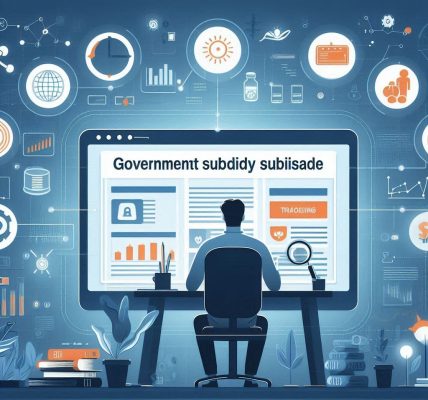Starting a new business requires substantial financial investment, and government subsidies can provide critical support to entrepreneurs. Various subsidy schemes exist to promote innovation, job creation, and economic development. This guide provides a step-by-step approach to understanding and claiming subsidies for startups and new businesses.
Why Government Subsidies Matter for Startups?
Government subsidies are designed to help businesses in multiple ways:
- Financial Assistance: Reduces initial investment burdens.
- Encourages Innovation: Provides support for research and development.
- Boosts Employment: Encourages job creation and skill development.
- Supports Industry Growth: Strengthens various sectors such as agriculture, manufacturing, and technology.
- Promotes Sustainability: Encourages the use of eco-friendly technologies and renewable energy sources.
Types of Subsidies Available for Startups
1. Capital Investment Subsidy
- Provides financial aid for setting up new businesses.
- Helps in purchasing machinery and infrastructure development.
- Example: Credit Linked Capital Subsidy Scheme (CLCSS) for MSMEs.
2. Interest Subsidy
- Reduces the interest burden on business loans.
- Startups receive a lower interest rate on working capital and term loans.
- Example: Stand-Up India Scheme for SC/ST and women entrepreneurs.
3. Technology Upgradation Subsidy
- Encourages businesses to adopt advanced technology.
- Helps in upgrading production methods for improved efficiency.
- Example: Technology Development Fund (TDF) by DRDO.
4. Export Promotion Subsidy
- Aims at supporting businesses in exporting goods and services.
- Provides tax exemptions, duty-free imports, and incentives.
- Example: Export Promotion Capital Goods (EPCG) Scheme.
5. Renewable Energy Subsidy
- Encourages startups to use sustainable and renewable energy sources.
- Grants are provided for installing solar panels, wind turbines, etc.
- Example: Ministry of New and Renewable Energy (MNRE) Subsidies.
6. Skill Development & Employment Subsidy
- Provides financial assistance for training employees.
- Reduces payroll costs for startups hiring fresh talent.
- Example: Pradhan Mantri Kaushal Vikas Yojana (PMKVY).
Step-by-Step Guide to Claiming Subsidies
Step 1: Identify the Right Subsidy for Your Business
- Research various government subsidy schemes relevant to your industry.
- Check eligibility criteria on official government portals like https://www.india.gov.in.
Step 2: Register Your Business
- Ensure your startup is legally registered under appropriate business structures (LLP, Pvt. Ltd., Partnership, Sole Proprietorship, etc.).
- Obtain necessary registrations such as GST, Udyam (for MSMEs), and PAN.
Step 3: Gather Required Documents
- Business registration certificate.
- Bank account details and PAN card.
- Detailed project report (DPR) or business plan.
- Loan sanction letter (if applicable).
- Financial statements and tax returns (if applicable).
Step 4: Apply Online Through Government Portals
- Visit the relevant ministry or state government website.
- Fill out the online application form with accurate details.
- Upload all required documents in the prescribed format.
Step 5: Follow Up on Application Status
- Keep track of your application through government portals.
- Respond to any queries from the subsidy processing authority.
Step 6: Receive Approval & Disbursement
- Once approved, funds are credited directly to your business account.
- Utilize funds as per the subsidy guidelines to avoid penalties.
Common Mistakes to Avoid While Claiming Subsidies
- Incorrect Documentation: Ensure all required documents are complete and correctly filled.
- Missed Deadlines: Apply before the deadline to avoid rejection.
- Ignoring State-Specific Subsidies: Many states offer additional financial aid apart from central government schemes.
- Applying Through Unauthorized Agents: Always apply directly through official portals to avoid fraud.
- Not Understanding Terms & Conditions: Read all eligibility and usage guidelines before applying.
Conclusion
Government subsidies provide a vital financial boost for startups and small businesses. By understanding the available schemes and following a structured application process, entrepreneurs can maximize their benefits and grow their businesses efficiently. Always stay informed about new subsidy programs through official government portals and financial advisory services.
For further details and updated subsidy schemes, visit https://www.india.gov.in and explore government-backed financial aid for your business needs.



